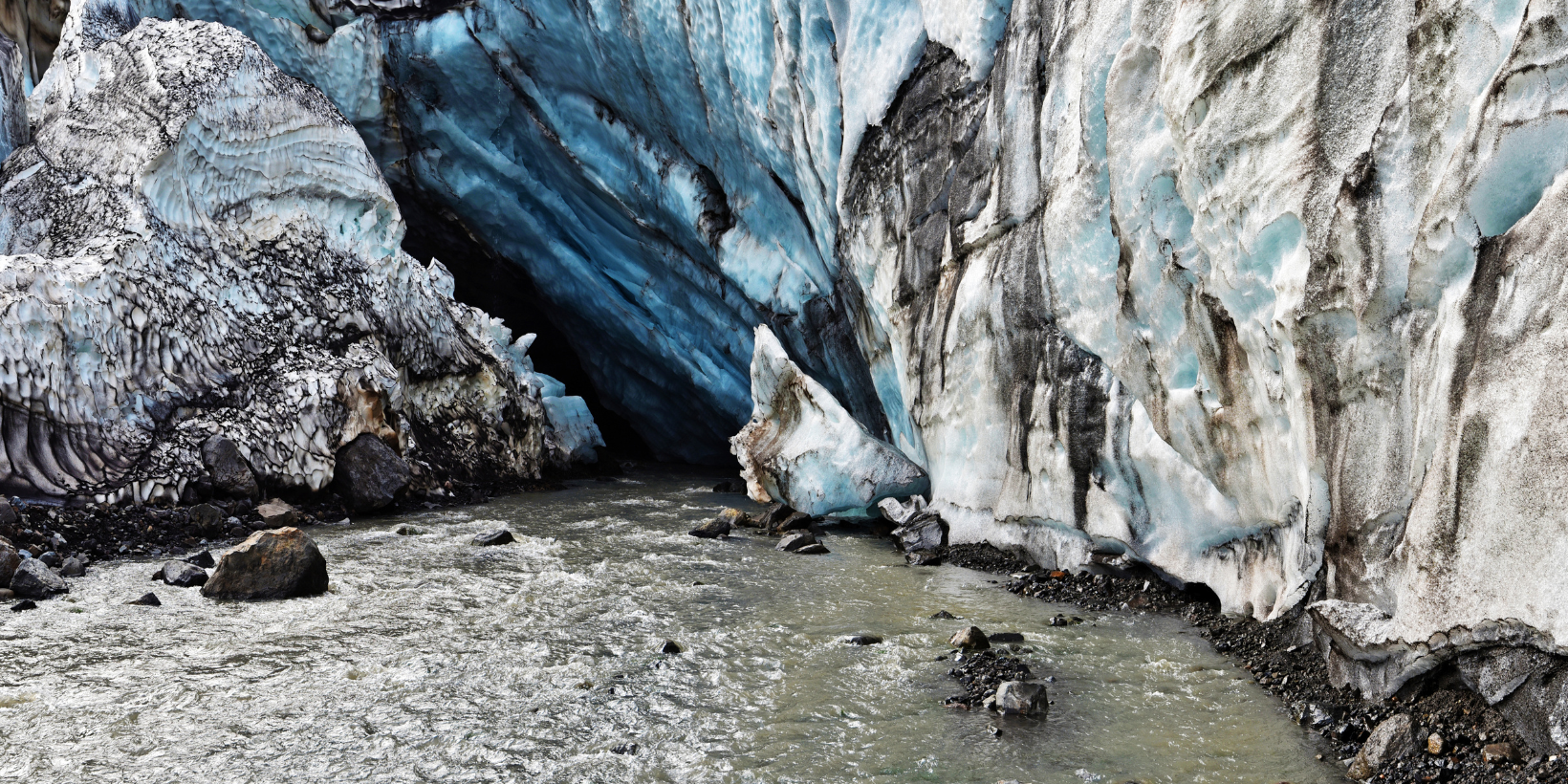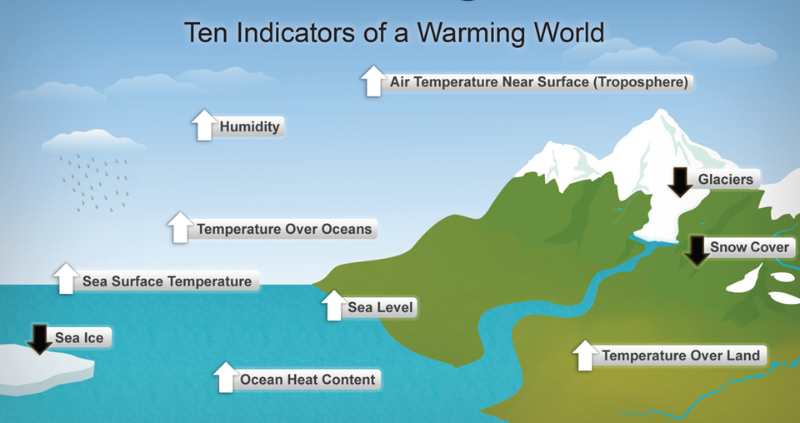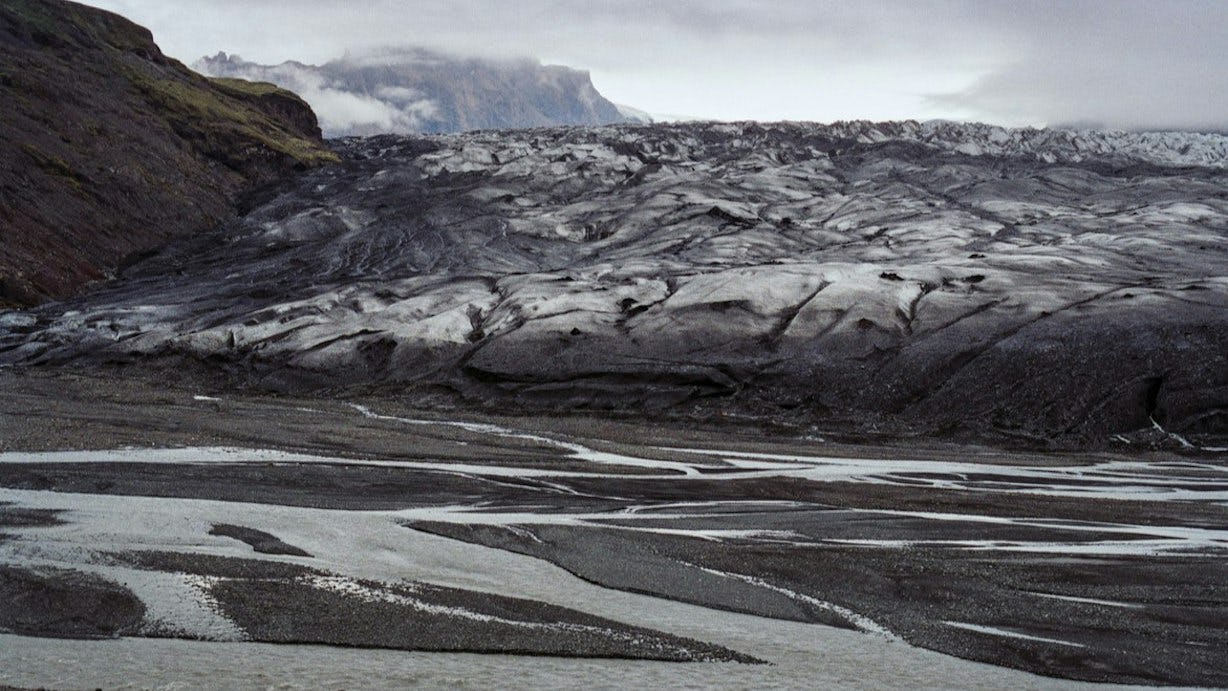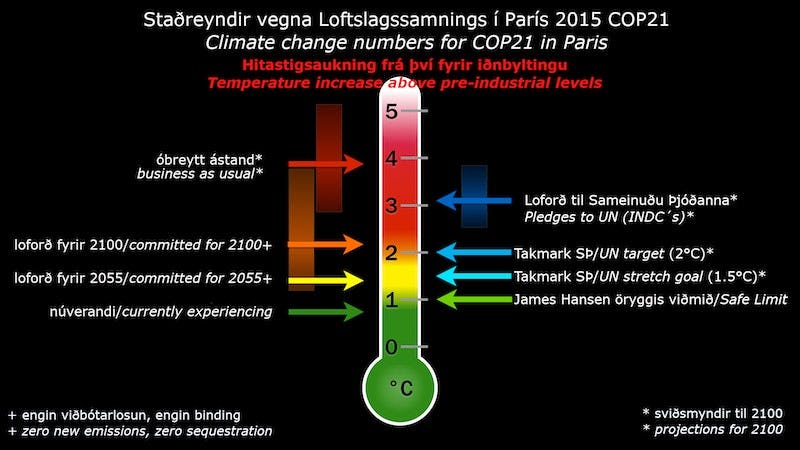Climate change & glaciers
Weather is ever changing and can be forecast only a few days into the future, whereas climate is the prevailing weather condition of a region and changes more slowly. The weather must be measured for several decades to monitor changes in the climate.

Global surface temperatures increased by 0.8°C on average during the 20th century and twice as much in the Arctic and sub-polar areas. This warming does not appear that large considering day-to-day temperature fluctuations, but as a change in mean annual temperature it has substantial consequences, resulting for example in melting of sea-ice and glaciers, rising sea levels, enhanced vegetation growth in temperate regions and changes in migratory routes of birds and animals.
The main cause of the current global warming is anthropogenic emission of carbon dioxide (CO2) and other greenhouse gases, such as methane (CH4), into the atmosphere. The increase in the concentration of greenhouse gases is due to combustion of fossil fuels, such as coal and oil, in electric power plants, transportation and industry, and a decrease in the uptake of CO2 due to deforestation, soil erosion and agriculture. Carbon dioxide levels in the atmosphere have increased by more than 45% since the industrial revolution. The oceans have absorbed one third of anthropogenic CO2 emissions since then leading to acidification, which inhibits shell growth. Ocean acidification will eventually lead to marine species extinctions and have widespread effects on marine ecosystems.

Ten key climate indicators that all point to a warming world.
Icelandic glaciers have retreated rapidly for more than two decades and glacier downwasting is one of the most obvious consequences of the warming climate. Several glaciers have disappeared in the last decade, such as Ok glacier in W-Iceland. Glaciers in Iceland reached their maximum size at the end of the 19th century and have since retreated and lost more than 2100 km2 (17%) of their area. Runoff from the glaciers has changed, and glacial lakes have formed or increased in size in front of many of them, while some have disappeared. The rate of retreat has increased in the last couple of decades and during the period 2000–2017 the glaciers lost more than 700 km2 of their area which amounts to 43 km2 per year on average (for comparison the area of Reykjavík is 273 km2).
Glaciers are the largest freshwater reservoir on Earth. The largest glaciers are the ice sheets in Antarctica and Greenland. Many smaller glaciers are found in the polar and subpolar areas and actually in mountain regions on every continent. Glacial meltwater is used for irrigation of crops, as drinking water for millions of people and for the generation of electricity by hydropower plants.
Icelandic glaciers contain 3500 km3 of ice, whereof the Vatnajökull ice cap alone holds 3000 km3. If all Icelandic glaciers would melt, they could submerge the entire country below 30 m of water, or raise global sea level by one cm. However, if all the glaciers of the world were to melt, sea level would rise by about 65 m. Coastal cities would be submerged as well as large parts of the Earth’s agricultural land.
Changes in Skaftafellsjökull 1989-2020


Iceland lies in the North-Atlantic, just south of the Arctic Circle. The country is at the border of two main climate zones, polar and temperate, and the climate can thus be classified as cold–temperate. A warm ocean current from the south, the North-Atlantic Current, results in a milder climate than expected, given the latitude of the country. The average annual temperature in the Icelandic lowlands was in the range of 2–5°C during the time period 1980–2000. The location of the main glaciers is controlled by the high amounts of precipitation that are delivered to the south coast by southerly winds. The average annual precipitation is 4000–5000 mm (at maximum 8000 mm) in the higher elevations of Vatnajökull and Mýrdalsjökull, whereas on Langjökull and Hofsjökull it reaches a maximum of 3500 mm.
Temperature proxies from oxygen isotopes in ice cores from the Greenland ice sheet have been used to estimate past climate in the North Atlantic region including Iceland. The climate was coldest during the Little Ice Age, ca. 1450–1900. From the settlement of Iceland (about 874 CE) until the 13th century, the climate was similar to the period 1920–1960, with mean annual temperatures ca. 1°C warmer than during the coldest parts of the Little Ice Age. Few areas in Iceland have been affected by the climate fluctuations of the last few hundred years to the same extent as southeast Iceland. During the Little Ice Age, the glaciers there expanded to an unprecedented size in historical times.
Glaciers reflect our past and reveal our future. This short film overlays imagery from the archives of the National Land Survey of Iceland with current day footage of six outlet glaciers in the Hornafjörður region of Southeast Iceland to reveal the breathtaking story of a rapidly disappearing frozen world.
Consequences of retreating glaciers

Response of glaciers to climate change
The response of glaciers to climate change depends on their size and shape, but most of them react to a change in mass balance within a few years by adjusting the position of their snout. The glacier will then continue to retreat or advance for many years or decades before completely adjusting to a change in climate. Short and steep valley glaciers adjust in a decade or two, but larger and less steep glaciers have a much longer response time. The response of glaciers to a change in mass balance thus depends on the slope and shape of the underlying bed, as well as on the existence of glacial lakes, that increase the melting. The ablation and the duration of the ablation season are increased in a warming climate. The increased meltwater, leads to increased sliding as the water lubricates the glacial bed, and calving is intensified for glaciers that enter the sea.
The sensitivity of glaciers to variations in climate is defined as the change in mass balance or glacier volume in response to a given climate change (temperature and precipitation). Recent modelling studies of the response of Skálafellsjökull, Heinabergsjökull and Fláajökull outlet glaciers to changes in temperature and precipitation show that they would lose 25–35% of their volume as a consequence of a warming of only 1°C. A warming of 2°C would eventually (after approximately 100 years of the model run) lead to loss of almost 60% of the original ice volume. We might think that 1°C warming is not much, but such a change affects the glaciers considerably.
Drastic changes are currently taking place in Greenland and Antarctica, and the rate of change is faster than according to previous predictions. The ablation areas have increased in size, reaching higher elevations, meltwater collects in numerous surface ponds, which suddenly drain as the water flows down moulins to the glacier bed. This development leads to an increase in the velocity of the ice flow and consequently in the rate of calving of outlet glaciers that enter the ocean.